
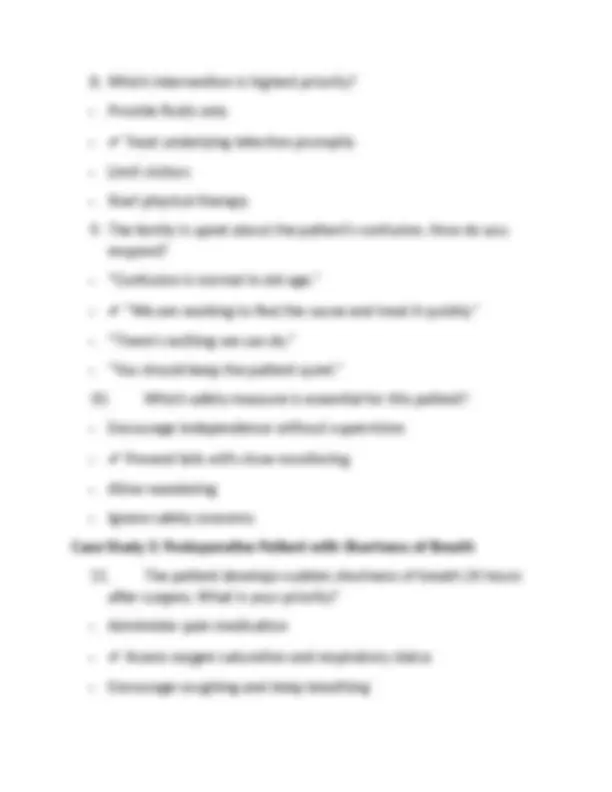
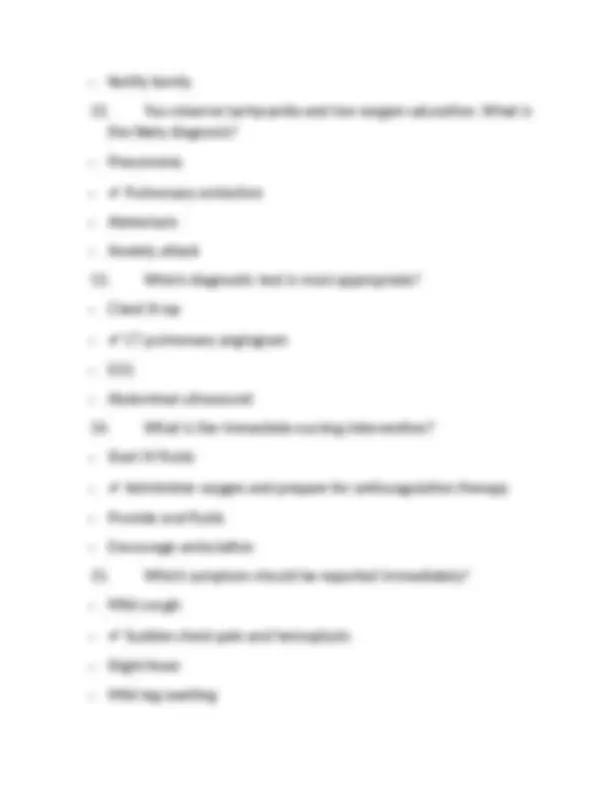
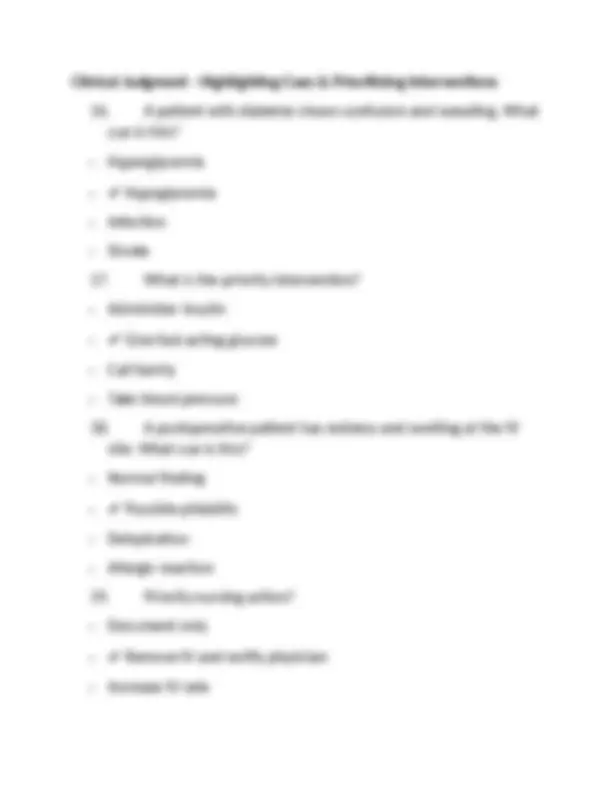
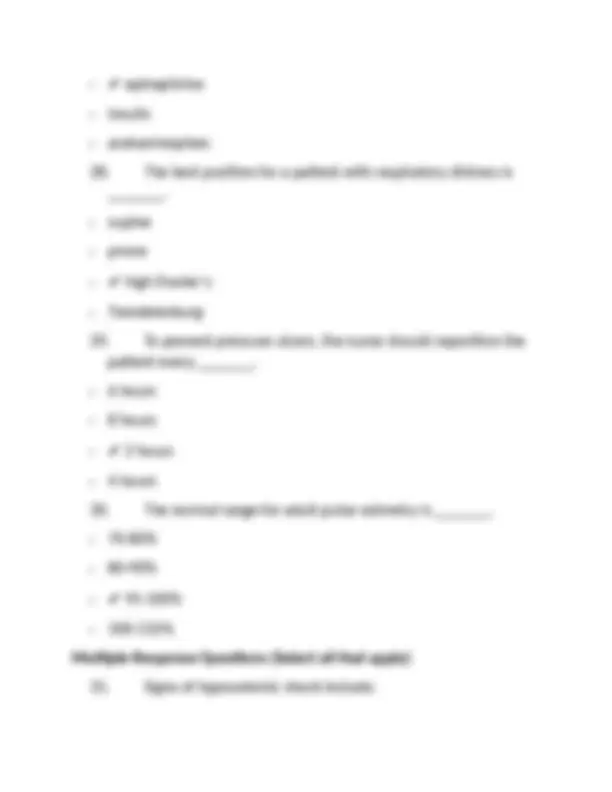
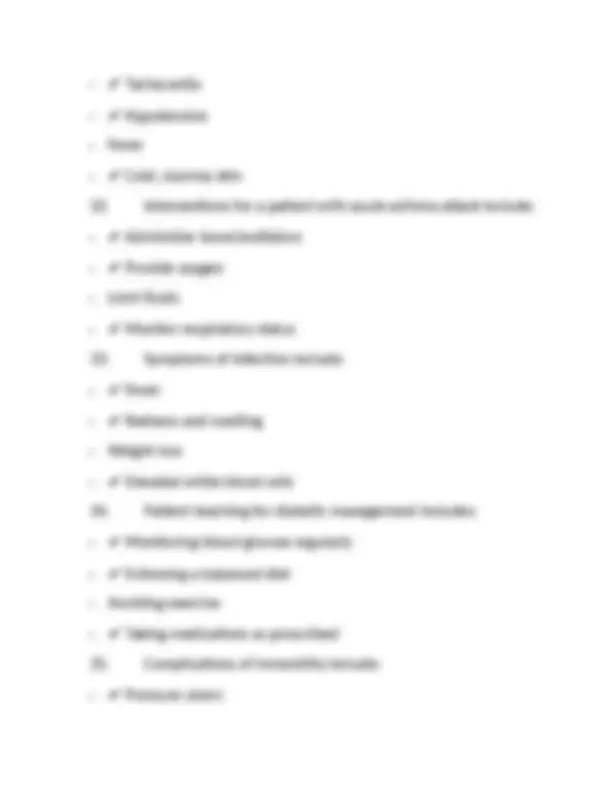
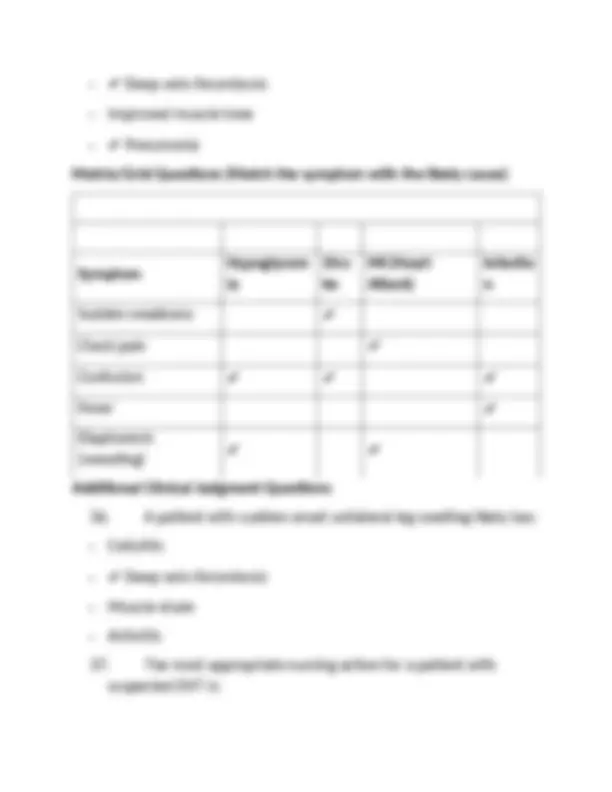
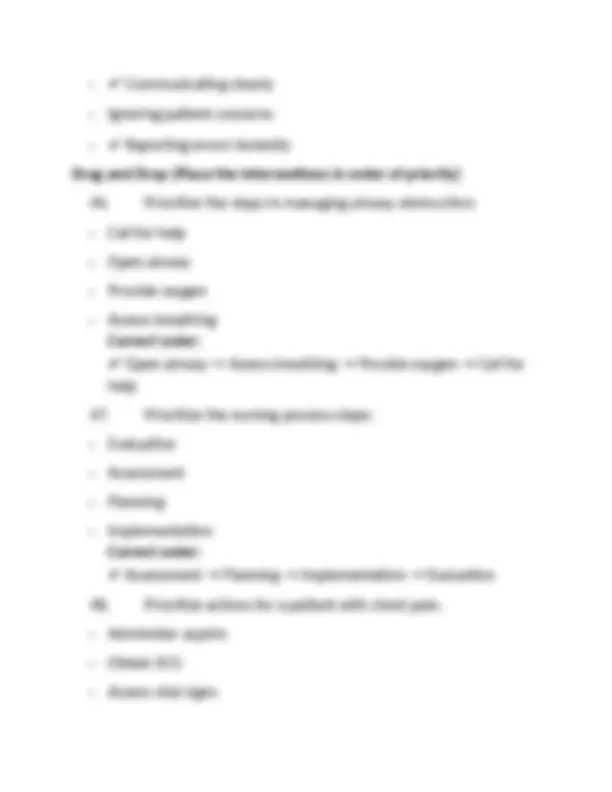
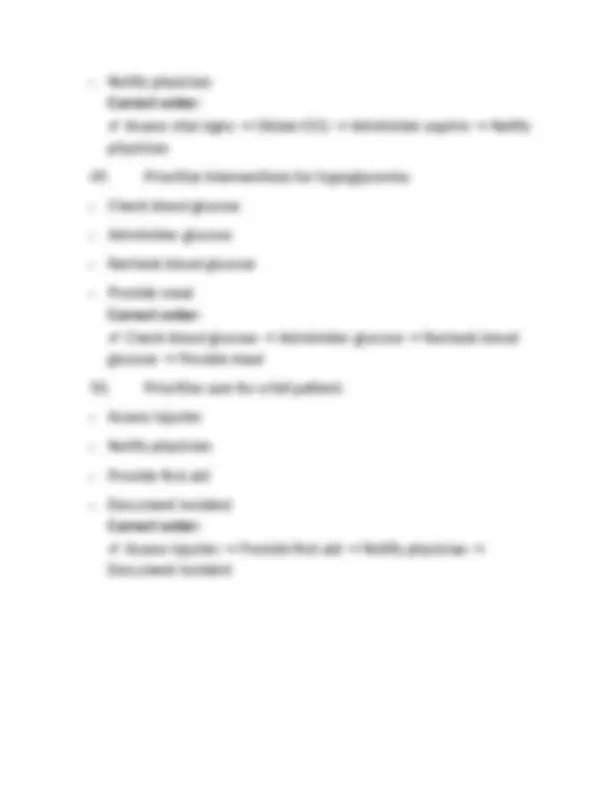


Study with the several resources on Docsity

Earn points by helping other students or get them with a premium plan


Prepare for your exams
Study with the several resources on Docsity

Earn points to download
Earn points by helping other students or get them with a premium plan
Community
Ask the community for help and clear up your study doubts
Discover the best universities in your country according to Docsity users
Free resources
Download our free guides on studying techniques, anxiety management strategies, and thesis advice from Docsity tutors
Next Generation NCLEX (NGN) Clinical Judgment Practice: Case Studies and Prioritization in Nursing Care Next Generation NCLEX (NGN) Clinical Judgment Practice: Case Studies and Prioritization in Nursing Care.
Typology: Exams
1 / 14

This page cannot be seen from the preview
Don't miss anything!









Case Study 1: Patient with Chest Pain
Complete blood count ✔ Cardiac enzymes (troponin) Electrolytes Liver function tests
Notify family
Clinical Judgment - Highlighting Cues & Prioritizing Interventions
Weight gain Hypertension
✔ epinephrine insulin acetaminophen
✔ Deep vein thrombosis Improved muscle tone ✔ Pneumonia Matrix/Grid Questions (Match the symptom with the likely cause) Symptom Hypoglycem ia Stro ke MI (Heart Attack) Infectio n Sudden weakness (^) ✔ Chest pain (^) ✔ Confusion (^) ✔ ✔ ✔ Fever (^) ✔ Diaphoresis (sweating)
Additional Clinical Judgment Questions
Apply heat ✔ Elevate the leg and notify provider Encourage walking immediately Massage the leg
✔ Communicating clearly Ignoring patient concerns ✔ Reporting errors honestly Drag and Drop (Place the interventions in order of priority)
Notify physician Correct order: ✔ Assess vital signs → Obtain ECG → Administer aspirin → Notify physician